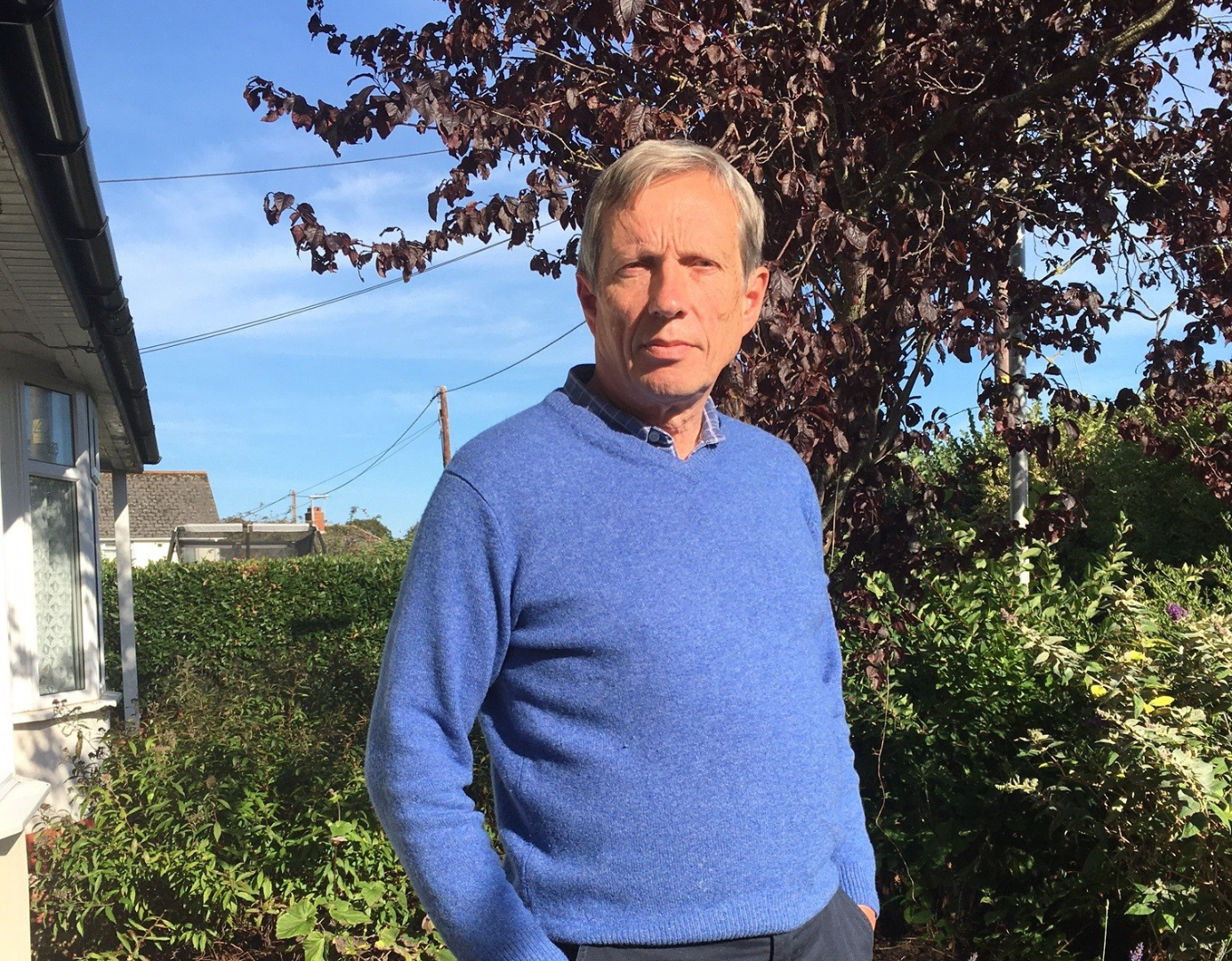Philip
Philip talks about his diagnosis and treatment for mantle cell lymphoma.

For about two months, I had problems with my stomach. I was struggling to eat and drink so went to see my GP who referred me to the gastric team at my local hospital. An ultrasound scan showed my spleen was enlarged but nothing else showed up in tests.
I had been on Google a fair bit when I first experienced the stomach problems and as a 69-year-old male had all sorts of imaginings of what I might have. In my mind I narrowed it down to stomach or bowel cancer. I had come across lymphoma in my searches but didn’t feel it fitted, as I didn’t have itching or night sweats; no weight loss or lumps in my neck.
A little while later lumps did appear under my chin and at the bottom of my neck; they came up pretty quickly and looked worrying. My doctor referred me back to hospital where blood tests were carried out and they said it looked like it was lymphoma.
When I first was admitted there was no space in haematology, so I was on a general ward. It wasn’t until the next day when I was transferred into haematology that things fell into place and I felt like things were moving forward. I had more blood tests; a biopsy and they checked my heart. The doctor said they suspected it was mantle cell lymphoma, but that they would need to wait for the biopsy results from the lab to be certain of the type.
The diagnosis was confirmed as mantle cell lymphoma.
I started treatment with R-CHOP chemotherapy R-CHOP is a cancer drug combination (R–rituximab, H–doxorubicin, O– vincristine, P–prednisolone, which is a steroid) I managed the first cycle quite well without too many issues, so they added cytarabine for cycles 2, 4 and 6.
Before my diagnosis I had been having issues with my abdomen and even eating a small amount of food made me feel bloated. I now had problems with my feet and lower legs that had become very swollen as well as having difficulty in swallowing. After the first chemotherapy my weight plummeted as the fluid disappeared. I lost more than a stone and a half in a week and a half.
About three or four weeks later my hair started to fall out, so I got it closely cut, but after the second chemotherapy I had it shaved off as it was getting to be a mess.
I was offered anti-sickness drugs with the cytarabine but refused them as I didn’t think I needed them. I quickly learned that if they offer you something it is usually because you need it, even if you don’t think you do!
My blood cell count dropped after each cycle and recovered a little before the next. My platelets, which are a type of blood cell that helps blood to clot, eventually crashed. It was explained that healthy adults have between 150-450 billion platelets in every litre of blood and doctors usually just refer to the number, so 150 means 150 billion platelets per litre of blood. I received an urgent call after a blood test between cycles; my platelets had gone down to 4, so I needed to be extremely careful and I was given a warning card to carry with me in case of accident.
I am one of Jehovah’s Witnesses and my religious beliefs exclude using blood products. My medical team managed the platelet problem with Thrombopoietin; a growth factor called granulocyte colony stimulating factor (G-CSF), that makes the bone marrow produce more white blood cells and a stimulant Erythropoietin (known as EPO) for the red blood cell production. My platelet count came back to normal within a week and my problems with swelling in my feet and legs improved, meaning I could drive again, which made a huge difference to me.
The rest of the treatment was not too bad, although I did feel sick on occasions and was now accepting the anti-sickness when offered, which took the problem away.
The doctor had explained to me that mantle cell lymphoma is manageable but not curable; they would treat it until it went into remission and that when it came back they would treat it again. It was explained that there were a number of treatment options available, with a number of new treatments coming along, which makes me feel positive.
I had COVID about a year before my diagnosis and asked if there could be a connection. The doctor said that I’d probably had the mantle cell lymphoma for some time before the symptoms appeared.
It’s now over a year since my last treatment and I have a small amount of problem with my toes, slight peripheral neuropathy and my legs usually ache a fair bit. But these are nothing that a couple of paracetamols can’t take care of. But I know what to look out for and there are no worrying symptoms.
I started with a check-up after three months, then after six months and eventually this will become annual. My consultant explained that I am going to be the first to notice the return of symptoms and that I must let them know If that happens.
I am very strongly religious and have a clear view of what will happen when I die. Having a lymphoma diagnosis does not frighten me. The experience has made me realise that there are a number of things I need to sort things out in case I do die. In the meantime, I feel I have a lot to look forward to.
